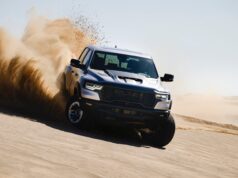Electric cars and plug-in hybrids are becoming more common everyday, especially with the introduction of the new Chevy Bolt – the electric car for the masses, but what’s next. Although hybrids, plug-in hybrids and fully electric vehicles are becoming more popular, there is one future technology that has yet to take off, hydrogen fuel cell vehicles. Honda originally started leasing its Clarity FCX fuel cell vehicle in 2008 and since then we’ve seen the limited release of other fuel cell vehicles from GM, Hyundai and most recently Toyota, but is the technology now ready for prime time? For the 2017 model year, Honda and Toyota have released two vehicles, which they hope will finally improve public perception of fuel cell vehicles and prove that they are just as easy to operate and as safe as conventional vehicles. With that we have our first head to head battle of the 2017 Honda Clarity and 2017 Toyota Mirai!
Both the Clarity and Mirai were revealed to the public around the same time, but the Mirai managed to hit the market sooner than the Honda Clarity. The Mirai managed to show up at select dealerships at the end of 2015, but it took Honda a full year later to start delivering the Clarity. In some ways the Mirai took advantage of being the first on the market to appeal to early adopters, but since Honda had a little longer to develop the Clarity, the Honda may have some added benefits in terms of driving range and seating capacity.
Styling from the future?
On the outside both the Clarity and Mirai feature futuristic styling that is easily more polarizing than the brand’s Accord and Camry models. Does one look better than the other? Not really. Both models aren’t exactly pretty. It seems that both Honda and Toyota have decided that fuel cell vehicles aren’t supposed to look like conventional cars, just like how the early hybrid and electric cars arrived on the market. It does beg the question, “Why does it have to look so weird?”
While there isn’t a clear winner on the exterior styling front, there are some big differences on the interior that made it easier to declare a winner. Both the Clarity and Mirai feature tech rich interiors, but the Clarity wins for feeling more like a normal car. The Clarity also manages to seat five passengers, while the Mirai can only seat four – something that will make the decision really easy for some buyers. One of Honda’s biggest goals for the Clarity was to make it feel more like a regular car, much like a fuel cell powered Accord. The interior feels more luxurious, comfortable and spacious than the Mirai. While the Mirai’s interior styling can take a bit to get used to, the Clarity’s interior styling is on par with the rest of the Honda lineup – with the luxury dialed up a notch, look at that faux suede on the dash. The Clarity’s interior is also quieter than the Mirai. After driving both vehicles back to back, the Mirai’s interior felt a notch or two below the Clarity.
What’s it like to drive the Clarity and Mirai?
If you’re hoping that that either model is as fun to drive as say – a Tesla Model S, you’ll be disappointed. While both models feature the instantaneous torque that makes electric vehicles fun to drive, the added weight of the fuel cell components and obvious bias towards efficiency make them more adept at just cruising down the road. Honda made some big changes to its powertrain with the big updates being the complete relocation of the entire fuel cell system under the hood and updates to the powertrain to make it quieter. The benefits: more interior space and a much quieter engine note than what the Mirai is capable of. Push the pedal to the floor in the Clarity and you’re greeted by a powertrain that is only slightly louder than a battery electric vehicle. Do the same in the Mirai and you’re greeted by a large whine, which will definitely take some getting used to. Once on the road, the Clarity has a slightly longer driving range over the Mirai at 366 vs 312 miles. Both models can be re-filled in 3-5 minutes.
On the back country roads of Santa Barbara, neither the Mirai or Clarity could be described as sporty, but the Clarity does feel a bit more planted and it’s suspension isn’t quite as soft as the Mirai.
Ok now what about pricing?
Just as Honda did with the Fit EV, you can only lease it, while Toyota gives you the option of either buying or leasing. If you choose to lease the Mirai it starts a few bucks lower than the Clarity at $349 a month with 2,499 due at signing for 36 months, while the Clarity is priced at $369 a month with $2,868 due at signing. The big difference though is that the Mirai’s lease only lets you drive 12,000 miles a year, while with the Clarity you can drive up to 20,000 miles a year, making it a better value than the Mirai. If you choose to buy the Mirai it starts at $57,500. Both models are also only available in California, but the state will give you a $5,000 check if you choose either model.
The winner is?
A the end of the day there was a clear winner – the Clarity. Why? It feels more like a normal car, which should help when buyers get ready to sign on the dotted line. It’s interior is more spacious than the Mirai, plus it also has room for up to five passengers, while the Mirai can only seat four. It’s powertrain is quieter the Mirai can also travel about 50 miles further, which is a big deal, since as of today there are only 26 hydrogen refueling stations online in California. Lastly for only marginally more a month, you can drive up to 8,000 miles more a year under the Clarity’s lease terms.
















